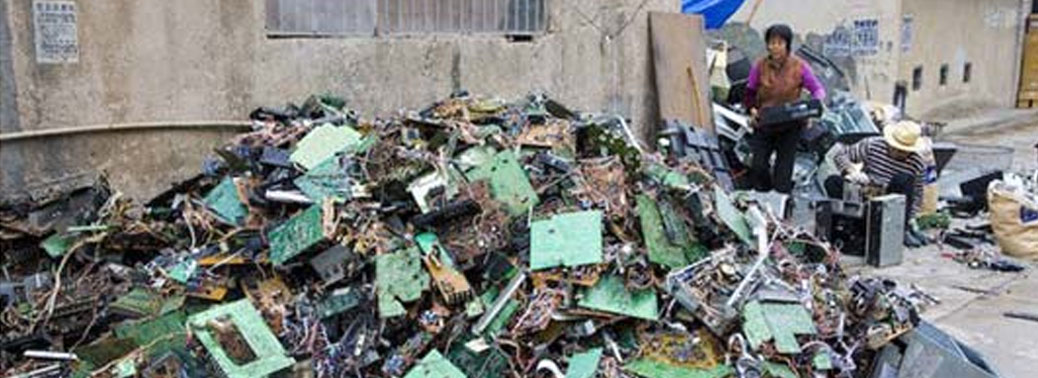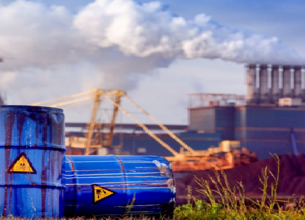E-WASTE RECYCLING HAS DOUBLED, SAYS CENTRE
05, Mar 2020

Prelims level : Pollution & Waste Management
Mains level : GS-III Conservation, Environmental Pollution and Degradation, Environmental Impact Assessment.
Why in News?
- In a recent question raised in Rajya Sabha, the centre has said that recycling of E-Wastes has doubled in the year 2018-2019 as compared to the previous year 2017-2018.
What is E-Waste?
- E-waste is the waste consisting of discarded electronic products (such as computers, televisions, and cell phones).
- India generates more than two million tonnes of e-waste annually, and the bulk of it is processed in the informal sector.
- India ranks fifth in the world in generating e-waste, according to the UN’s Global E-Waste Monitor, 2014.
- In 2017, the Centre had brought into effect the E-waste Rules, which require companies that make or sell electronic equipment to collect a certain percentage of e-waste generated from their goods once they have reached their “end-of-life.”
- In 2017, over 200 manufacturers of electronic goods, including some e-giants, were served notices by the Central Pollution Control Board (CPCB) for not complying with e-waste procurement norms.
About E-Waste (Management) Rules, 2016:
- The Ministry of Environment, Forest and Climate Change notified the E-Waste Management Rules, 2016 in supersession of the e-waste (Management & Handling) Rules, 2011.
- Making the norms stringent, the new E-waste rules included Compact Fluorescent Lamp (CFL) and other mercury containing lamps, as well as other such Equipments.
- For the first time, the rules brought the producers under Extended Producer Responsibility (EPR), along with targets. Producers have been made responsible for collection of E-waste and for its exchange.
- Various producers can have a separate Producer Responsibility Organisation (PRO) and ensure collection of E-waste, as well as its disposal in an environmentally sound manner.
- Deposit Refund Scheme has been introduced as an additional economic instrument wherein the producer charges an additional amount as a deposit at the time of sale of the electrical and electronic equipment and returns it to the consumer along with interest when the end-of-life electrical and electronic equipment is returned.
- The role of State Governments has been also introduced to ensure safety, health and skill development of the workers involved in dismantling and recycling operations.
- A provision of penalty for violation of rules has also been introduced.
- Urban Local Bodies (Municipal Committee/Council/Corporation) has been assign the duty to collect and channelized the orphan products to authorized dismantler or recycler.
About E-waste (Management) Amendment Rules, 2018:
- The e-waste collection targets under EPR have been revised and is being applied from October 1, 2017.
- The phase-wise collection targets for e-waste in weight is 10% of the quantity of waste generation as indicated in the EPR Plan during 2017-18, with a 10% increase every year until 2023. The target from 2023 onwards, shall be 70% of the quantity of waste generation as indicated in the EPR Plan.
- The quantity of e-waste collected by producers from the October 1, 2016 to September 30, 2017 shall be accounted for in the revised EPR targets until March 2018.
- Separate e-waste collection targets have been drafted for new producers, i.e. those producers whose number of years of sales operation is less than the average lives of their products.
- Producer Responsibility Organizations (PROs) shall apply to the Central Pollution Control board (CPCB) for registration to undertake activities prescribed in the Rules.
- Under the Reduction of Hazardous Substances (RoHS) provisions, cost for sampling and testing shall be borne by the government for conducting the RoHS test. If the product does not comply with RoHS provisions, then the cost of the test will be borne by the producers.
Who is the Monitoring Authority?
- The CPCB and the State Pollution Control Boards are empowered to check whether recycling agencies are complying with the E-waste Rules.
What does the Recent Stats Says?
- In FY 2017-2018, 7,08,445 tonnes of waste was generated, of which 69, 414 tonnes were recycled, compared to 1, 64,663 tonnes of recycled waste from 7,71,215 tonnes in FY 2018-2019, which implies that 10% recycling rate in 2017-18 has risen to a little over 20% in 2018-2019.
Way Forward:
- In India, recycling of e-waste is almost entirely left to the informal sector, which does not have adequate means to handle either the increasing quantities or certain processes, leading to intolerable risk for human health and the environment.
- A mechanism should be developed to formalise the recyclers by collaborating with the manufacturers which will be a win-win situation for all the stakeholders.
- Initiatives should be taken to support the recyclers and dismantlers with modern technologies to handle the e-wastes in environment friendly manner.
- Currently India has only 178 registered e-recyclers which is meagre in comparison to the massive amount of waste generated. So, the Government should come up with the schemes to promote this industry which would further boost the job generation in the present scenario of jobless growth.
- Education and awareness campaign should be carried out for consumers to encourage them to dispose off the e-waste generated by them to the registered recycling firms.
- The legislations and the rules must be properly enforced to bring out better outcomes.
















